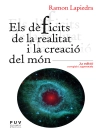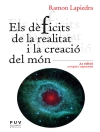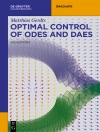This brief book introduces the Poisson-Boltzmann equation in three chapters that build upon one another, offering a systematic entry to advanced students and researchers. Chapter one formulates the equation and develops the linearized version of Debye-Hückel theory as well as exact solutions to the nonlinear equation in simple geometries and generalizations to higher-order equations.
Chapter two introduces the statistical physics approach to the Poisson-Boltzmann equation. It allows the treatment of fluctuation effects, treated in the loop expansion, and in a variational approach. First applications are treated in detail: the problem of the surface tension under the addition of salt, a classic problem discussed by Onsager and Samaras in the 1930s, which is developed in modern terms within the loop expansion, and the adsorption of a charged polymer on a like-charged surface within the variational approach.
Chapter three finally discusses the extension of Poisson-Boltzmann theory to explicit solvent. This is done in two ways: on the phenomenological level of nonlocal electrostatics and with a statistical physics model that treats the solvent molecules as molecular dipoles. This model is then treated in the mean-field approximation and with the variational method introduced in Chapter two, rounding up the development of the mathematical approaches of Poisson-Boltzmann theory.
After studying this book, a graduate student will be able to access the research literature on the Poisson-Boltzmann equation with a solid background.
Cuprins
Derivation of the Poisson-Boltzmann equation.- Generalizations of the Poisson-Boltzmann equation.- Theory and its Confrontation with Experiment.
Despre autor
Dr. Ralf Blossey is a statistical physicist. Throughout the roughly first ten years of his career, his research was mainly on wetting phenomena, in particular on the dynamic behaviour near first-order transitions in various physical systems. In the new millennium his interest shifted towards biophysical applications of statistical physics, the two main lines being processes related to gene regulation and macromolecular electrostatics. In the period 2003-2013 he directed a research team at the Interdisciplinary Research Institute in Lille under its former name « Biological Nanosystems ». In 2014, the team joined the research laboratory on glycobiology UGSF.












